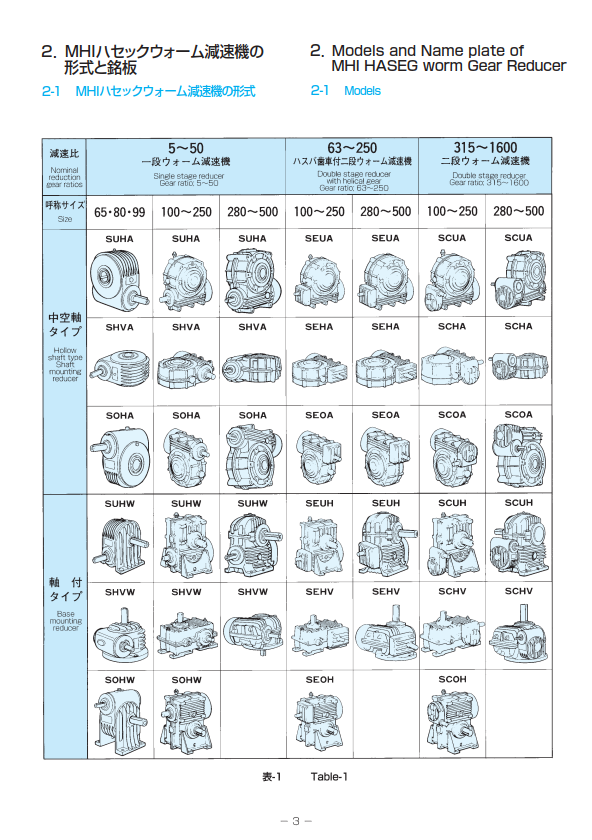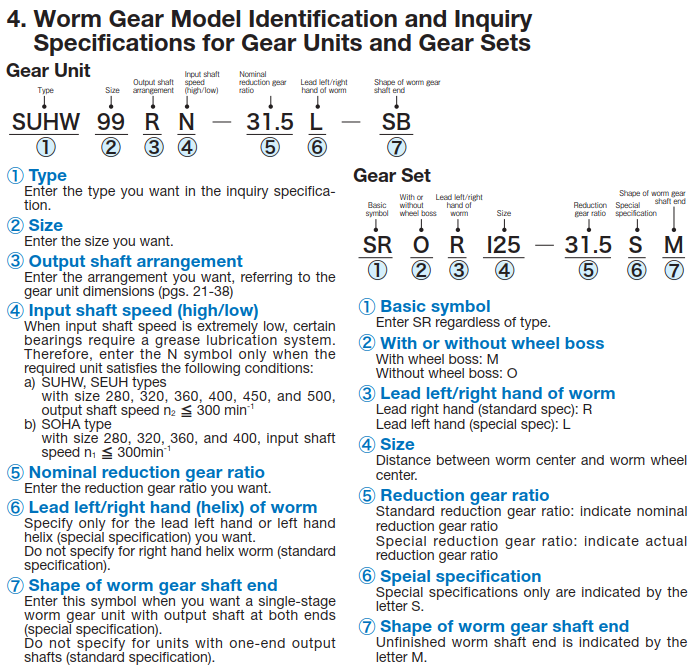- Home
- Products
- Niemann Worm Gear Units
- MHI HASEG Worm Gear Reducer SUHA Series
- MHI HASEG Worm Gear Reducer SEUA Series
- MHI HASEG Worm Gear Reducer SCUA Series
- MHI HASEG Worm Gear Reducer SHVA Series
- MHI HASEG Worm Gear Reducer SEHA Series
- MHI HASEG Worm Gear Reducer SCHA Series
- MHI HASEG Worm Gear Reducer SOHA Series
- MHI HASEG Worm Gear Reducer SEOA Series
- MHI HASEG Worm Gear Reducer SCOA Series
- MHI HASEG Worm Gear Reducer SUHW Series
- MHI HASEG Worm Gear Reducer SEUH Series
- MHI HASEG Worm Gear Reducer SCUH Series
- MHI HASEG Worm Gear Reducer SHVW Series
- MHI HASEG Worm Gear Reducer SEHV Series
- MHI HASEG Worm Gear Reducer SCHV Series
- MHI HASEG Worm Gear Reducer SOHW Series
- MHI HASEG Worm Gear Reducer SEOH Series
- MHI HASEG Worm Gear Reducer SCOH Series
- MHI HASEG Dual Lead Worm Gear Reducer Series
- Niemann Worm Gear Sets
- Planetary Traction Drive Units
- MHI HASEG Planetary Traction Drive Units TRDF S Series
- MHI HASEG Planetary Traction Drive Units TRDB P Series (Single-Stage Type)
- MHI HASEG Planetary Traction Drive Units TRDB P Series (Double-Stage Type)
- MHI HASEG Planetary Traction Drive Units TRDB P Series (Triple-Stage Type)
- MHI HASEG Planetary Traction Drive Units TRDF P Series (Single-Stage Type)
- MHI HASEG Planetary Traction Drive Units TRDF P Series (Double-Stage Type)
- MHI HASEG Planetary Traction Drive Units TRDF P Series (Triple-Stage Type)
- MHI HASEG Planetary Traction Drive Units TRDB H Series
- MHI HASEG Planetary Roller Reducer TSDB125H-RX Series
- MHI HASEG Planetary Roller Reducer TSDB160H-RX Series
- Hydraulic Equipments
- Programmable Logic Controllers (PLCs)
- Mitsubishi iQ-R Series PLC
- Mitsubishi Q Series PLC
- Mitsubishi L Series PLC
- Mitsubishi iQ-F(FX5U) Series PLC
- Mitsubishi FX3U Series PLC
- Mitsubishi FX3G Series PLC
- Mitsubishi FX3S Series PLC
- Mitsubishi FX2N Series PLC
- Mitsubishi Alpha2 Series PLC
- Mitsubishi QS Series PLC
- Mitsubishi WS Series PLC
- Mitsubishi FX1N Series PLC
- Mitsubishi FX1S Series PLC
- Mitsubishi A Series PLC
- Mitsubishi PLC Accessories
- Display Units & Human Machine Interfaces (HMIs)
- Motion Control (Servo Motors & Drives)
- Mitsubishi MR-J5 Series Servo
- Mitsubishi MR-J4 Series Servo
- Mitsubishi MR-J3 Series Servo
- Mitsubishi MR-J2S Series Servo
- Mitsubishi MR-J2M Series Servo
- Mitsubishi MR-J2 Series Servo
- Mitsubishi MR-JN Series Servo
- Mitsubishi MR-JE Series Servo
- Mitsubishi MR-E Series Servo
- Mitsubishi MR-H Series Servo
- Mitsubishi MR-C Series Servo
- Mitsubishi Servo Accessories
- Variable Speed/Frequency Drives (VSD/VFD) / Inverters
- Mitsubishi FR-A800 Series Inverter
- Mitsubishi FR-A800 Plus Series Inverter
- Mitsubishi FR-F800 Series Inverter
- Mitsubishi FR-E800 Series Inverter
- Mitsubishi FR-A700 Series Inverter
- Mitsubishi FR-F700 Series Inverter
- Mitsubishi FR-E700 Series Inverter
- Mitsubishi FR-D700 Series Inverter
- Mitsubishi FR-L700 Series Inverter
- Mitsubishi FR-F700P Series Inverter
- Fuji inverter accessories
- Mitsubishi inverter accessories
- Tension Controllers
- Electromagnetic Clutch & Brake
- Gear Motors
- Three Phase Motors
- Blowers, Fans & UPS
- Industrial PC & Data Communications
- All Categories
- Niemann Worm Gear Units
- Manufacturers
- Quote Request
- News
- FAQ

















